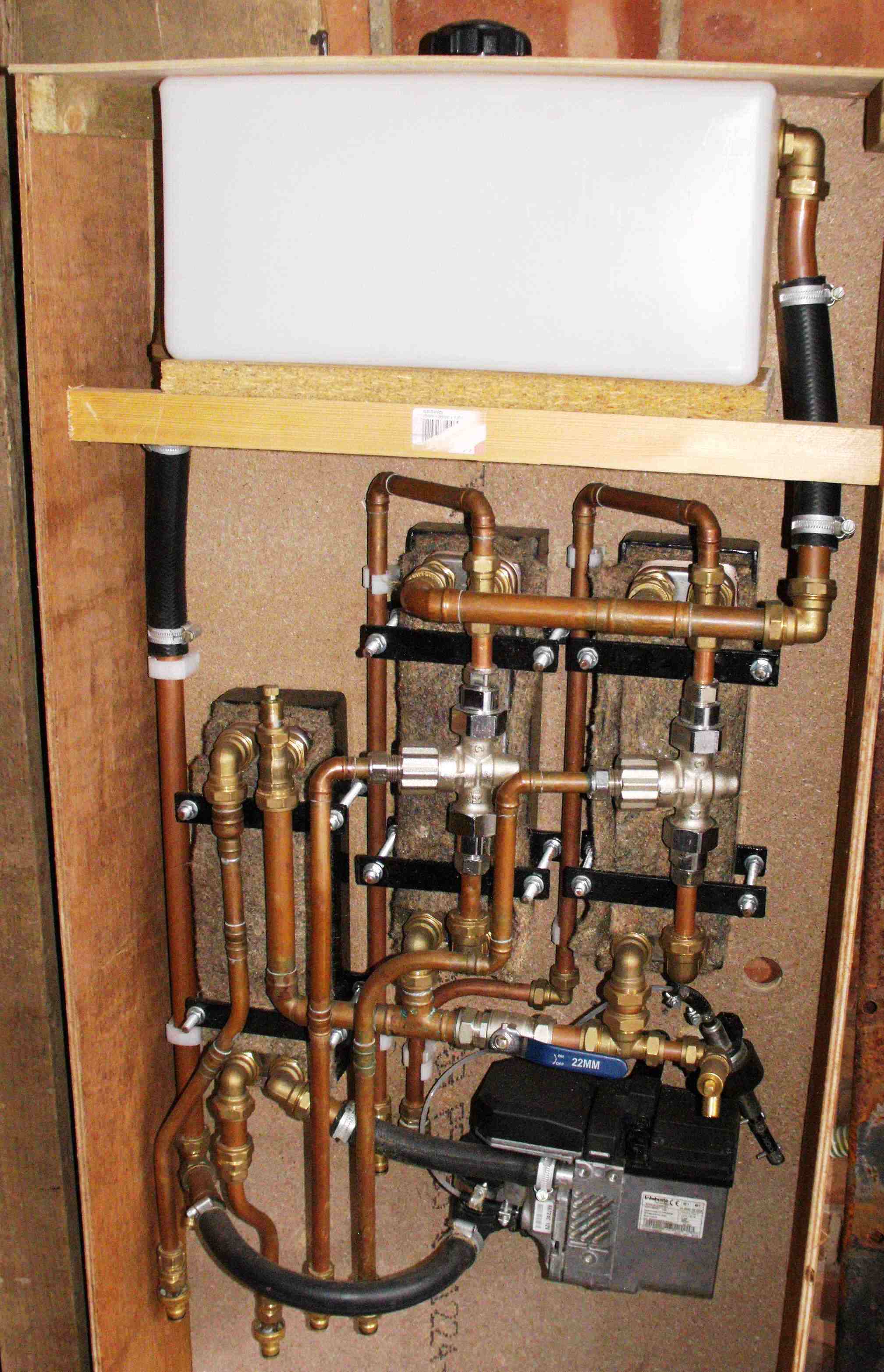So 5 kw is thermotop c
And 9 kw is thermo pro 90
Thanks for that !
Next question is .... What is the temp of the coolant before it goes into the heat exchanger and what sort of Lpm it pumps it at ?
Iím just having another of my brainwaves in DIY world 😁
5 years ago I thought about making my own version with a few additions of my own.
So I put this together with the view of then fitting it into a box.

Firstly the diesel heater is a Thermo Top C and its a universal variant. A diesel heater from a Rover 75 will work as will one from a Citroen C5 and C8. The universal units are available ex narrow boat and yachts. Mine came from a refurbisher.
Vehicle specifical Thermo Tops for BMW and others that integrate into the vehicles Canbus do not work, no matter what the Ebay sellers say. (I'v got a BMW one here in the garage that doesn't work.)
You will need a wiring harness, a fuel pump and in some cases a water pump. A 1531 controller is also a plus although cheaper digital controllers or a standard on/off switch will work.
When I played around with this the water temperature in the tank was 9 degrees. With the heater working flat out the temperature at the brush head was 35 degrees after 100 meters of hose, most of which was coiled on the hose reel. The water leaving the heat exchanger to go back to the boiler via the header was cold. That heat exchanger zapped every scrap of heat from the hot water.
I was running my pump at 3 on my Varistream which was around 1.5lpm with cold water. Hot water flows quicker through the hose so 3 on my Varistream would been more lpm but I didn't measure it.
I believed that 5kw would support heating 2 hose reels. According to the calculator I used, raising 1.5lpm of water through 26 degrees should have only used 2.65kw, so the rest of the heat was being lost, mainly through the exhaust. That put me off a bit.
The idea of the 3rd heat exchanger was to connect it up to a third pump that would be controlled using a digital temperature controller. This was my automatic control solution to ensure the furnace remained running when I stopped to chat to people.
The cycle of a Thermo Top C is that it takes around 90 seconds to fully start. It will burn on full heat mode until the water its heating gets up to 74 degrees C. At 74 degrees the heater goes into half heat mode. Once the temperature of the heated water reaches 77 degrees the heater goes in power down mode, which takes around 90 seconds.
Now if you start to draw heat from the heating circuit when the water is 75 degrees, the heater will stay in half heat mode until it drops to 68 degrees C is memory serves me. So the idea was to program the digital controller to kick a pump in at 75 degrees and switch it off at 70 degrees C and bleed that hot water into the tank.
The problem with diesel heaters is getting them out of heating sync. So if I talked to a customer for a while and the heater went into its shutdown cycle I would have to wait for at least 3 minutes before the heater switched off and then restarted. By then the water at the brush head was cold as I had zapped all the heat from it and because I'm still working the temperature will take a long time before it starts to heat the water up. I will probably have completed the next house using mainly cold water. Once I stop working the heater then has a chance to catch up. This will probably mean the heater again goes into shutdown mode. This is the reason why NWH and a few others redirect the water to the tank on route to the next customer.
These things are primarily engine preheaters. So they start and warm up the coolant in the engine block. When the temperature of the coolant water reaches 30 degrees the unit will switch on the internal blower motor so defrosting the windscreen and warming the cabin. This process will take around 30 minutes, so the programmer will switch off after 30 minutes unless you set it to stay on longer. The heater shuts off at 77 degrees C as that is before the vehicles cooling thermostat starts to open.
Its pointless pumping that hot water through the radiator to be cooled by it.
.